WMG News
Crash-resistant glazing installed on the new Coventry Very Light Rail Vehicle
· Crash-resistant glazing features on the new Coventry Very Light Rail vehicle, and could be used to improve passenger safety in other means of public transport
· The glazing is made of a highly resilient polymer and has been designed by engineers from WMG - University of Warwick, Far-UK and TDi Ltd.
· The glazing, which is highly resistant to failure, has advanced coating to increase product lifetime.
A new form of window glazing featuring a lightweight polymer with an advanced scratch-resistant coating has been installed on the Coventry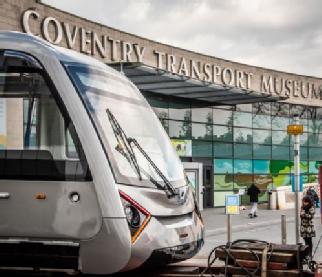 Very Light Rail vehicle, and could be used in other means of public transport. The new windows are highly resistant to breakage which provides passengers with a step-change in safety.
Very Light Rail vehicle, and could be used in other means of public transport. The new windows are highly resistant to breakage which provides passengers with a step-change in safety.
The glazing has been designed by a collaboration of WMG - University of Warwick, Far-UK (Lead) and TDi Ltd and was funded via the UK Innovation agency, Innovate UK (SBRI Rail Demonstrations: First of a Kind 2020).
The official report into the 2016 Sandilands (Croydon) tram crash made a number of recommendations for tram vehicle improvements. It called for development of windows and doors with improved strength. To address this need, researchers have been on a mission to make public transport safer in new innovative ways, one of which features crash-resistant glazing.
The new glazing is now revealed on the newly developed Coventry Very Light Rail vehicle, thanks to the Innovate UK funded project “Resilient glazing for safer passenger vehicle operation” (Resi-Glaze), which is an exciting collaboration between industry and academia.
The new glazing has been fully tested to ensure that it can survive exposure to severe projectile impact, all weather conditions, and has no negative impact on the environment compared to glass.
The technical team was then able to install it on the new Coventry Very Light Rail vehicle, meaning that the vehicle now holds two public transport firsts, as it has anti-microbial grab poles and crash-resistant glazing.
Dr Darren Hughes, from WMG at the University of Warwick comments:
“The new Coventry Light Rail vehicle has a number of major innovations including being lightweight, battery-powered and having reduced environmental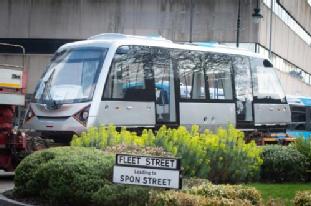 footprint. The vehicle has shown that major steps forward can be made using a UK-centric manufacturing approach. The Sandilands accident report identifies clearly the need for safer glazing in trams and we decided this would be the perfect opportunity to design and make the glazing and see it installed. Although we have demonstrated the technology in trams, we believe it points a path for safer future glazing solutions in the wider rail sector.”
footprint. The vehicle has shown that major steps forward can be made using a UK-centric manufacturing approach. The Sandilands accident report identifies clearly the need for safer glazing in trams and we decided this would be the perfect opportunity to design and make the glazing and see it installed. Although we have demonstrated the technology in trams, we believe it points a path for safer future glazing solutions in the wider rail sector.”
Dr Sophie Cozien-Cazuc from Far-UK Ltd adds:
“Far-UK has been thrilled to be given the opportunity to develop and manufacture resilient lightweight polymeric panels for the Coventry Very Light Rail vehicle. After the Croydon accident in November 2016, there was the need for more robust glazing options. This Resi-Glaze project allows innovations from other transport sectors to be brought to the rail industry. Polycarbonate glazing has moved on from the 1980s. Far is looking forward to providing this new glazing in the transport sector in general.”
Paul Salkeld from TDi Ltd adds:
“Transport Design International have been involved in many innovative projects over the years and this project has sound relevance as we look to promote safer and cleaner ways of providing public transport. We are looking forward to seeing this moving forward now in many applications.”
Councillor Jim O’Boyle cabinet member for jobs, regeneration and climate change said:
“I am delighted that this glazing innovation is being tested as part of our vehicle development. It will also have much wider application too, which is very exciting.
“We are right at the front of the green industrial revolution and our plans for Very Light Rail have already achieved a number of world first developments. The Coventry Very Light Rail project has the potential to revolutionise the way people travel, importantly at an affordable cost, and it will take another step forward later this year when both our new vehicle and our innovative track system is tested in real-world conditions.”
ENDS
14 JULY 2021
NOTES TO EDITORS
High-res images available at:
https://warwick.ac.uk/services/communications/medialibrary/images/march_2021/dsc_3057_002.jpeg
Caption: The glazing of the Coventry VLR as seen in situ
Credit: WMG, University of Warwick
https://warwick.ac.uk/services/communications/medialibrary/images/march_2021/230321vlr_citycentre_006.jpg
Caption: The glazing of the Coventry VLR as seen in situ
Credit: WMG, University of Warwick
https://warwick.ac.uk/services/communications/medialibrary/images/march_2021/230321vlr_citycentre_063.jpg
Caption: The glazing of the Coventry VLR as seen in situ
Credit: WMG, University of Warwick
For further information please contact:
Alice Scott
Media Relations Manager – Science
University of Warwick
Tel: +44 (0) 7920 531 221
E-mail: alice.j.scott@warwick.ac.uk
WMG Associate Professor partners with leading health-tech company
 WMG’s Associate Professor Mark Elliott will be working alongside health tech experts at EQL, in a two year part-time secondment, focusing on the impact of digital health technology.
WMG’s Associate Professor Mark Elliott will be working alongside health tech experts at EQL, in a two year part-time secondment, focusing on the impact of digital health technology.
Dr Elliott was awarded funding through the UKRI Innovation Scholars Secondment: Biomedical Science scheme which aims to intensify knowledge exchange between industry and academia.
Dr Elliott explained: “I’m looking forward to working closely with the team at EQL. My previous research has always been on the academic side so this will give me a real insight into a fast-growing health-tech company and how they operate.
“The aim of the secondment is to support EQL in evaluating and validating their platforms using rigorous research methods, whilst also gaining knowledge of the state-of-the-art technologies that EQL use to support people with their musculoskeletal health; it’s a really exciting opportunity.”
Dr Elliott is based at the Institute of Digital Healthcare at WMG, University of Warwick with his core research focusing on human movement analytics, using signal processing and data science approaches to monitor, measure and model movement in a range of different contexts. He is particularly interested in the self-management of physiotherapy, highlighting it as one of the big challenges in healthcare at the moment.
His role on the secondment is to undertake research into how digital applications of technology can support people to self-manage their musculoskeletal health. The focus will be on implementing remote management and digital health platforms that could incorporate a number of technologies such as chat bots. He will initially work in the R&D team to investigate methods to collect clinical information through smartphone applications as well as exploring other novel uses of consumer grade technology.
He added: “On the research side it’s really useful to understand how people can use digital platforms — how they engage with them and for how long, whether they find it useful and whether it improves the long-term outcomes of patients.”
Find out more about at the Institute of Digital Healthcare here.
First International safety standard for fully automated driving systems has been published
§ One of the first applications of Level 4 autonomous vehicles is expected to be low speed automated driving (LSAD) systems, such as pods
§ However, lack of safety standards has hampered their commercial deployment on public roads
§ An international group of experts led by WMG, University of Warwick working together as a part of an ISO technical committee, has published the first international (ISO) safety standard for level 4 automated driving systems, taking them a step further towards being more widely available
· This new ISO standard could enable an environmentally-friendly transport option, as well as a solution for people with mobility issues.
The use of low speed automated driving systems can contribute to reduction of congestion and carbon emissions all over the world, however the enrolment of such systems has been hampered by the lack of safety standards, until now; as an international group of experts led by WMG, University of Warwick working as part of an ISO technical committee have published the first international safety standard for level 4 automated driving systems.
Low speed automated driving (LSAD) systems, such as the autonomous pods are classed as a level 4 automated driving systems. They provide an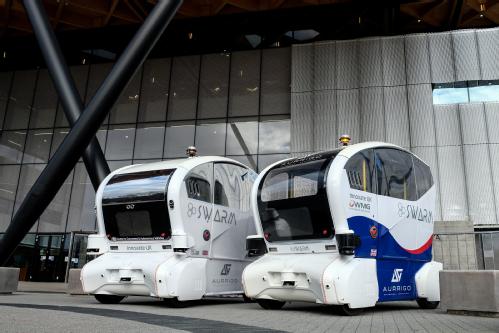 opportunity for cities to reduce congestion and carbon emissions, thus contributing to net-zero targets.
opportunity for cities to reduce congestion and carbon emissions, thus contributing to net-zero targets.
They currently tend to operate on predefined routes in low-speed environments, often being used in commercial, business or university campuses. Yet growth in this area has been hampered by a lack of international standards that define minimum performance and safety requirements to be met.
However, the first international safety standard for a level 4 automated driving systems has just been published by ISO (International Organization for Standardization) to help accelerate its progress in a safe and sustainable way.
The standard, ISO 22737, ‘Intelligent transport systems — Low-speed automated driving (LSAD) systems for predefined routes — Performance requirements, system requirements and performance test procedures’ was developed by an international group of experts led by Dr Siddartha Khastgir from WMG, University of Warwick, UK.
In the ISO 22737 standard, the group have set out the specific minimum safety and performance requirements for LSAD systems, providing a common language to help facilitate the development and safe deployment of this technology worldwide. The group included experts from Japan, USA, Canada, Australia, South Korea, China, Germany, France, the Netherlands, Hungary and the UK.
This standardization activity is underpinned by strong research outcomes from the CCAV and Innovate UK funded INTACT research project by WMG and Aurrigo; and also by the research conducted as part of Dr Khastgir’s UKRI Future Leaders Fellowship.
Dr Siddartha Khastgir, from WMG, University of Warwick who served as the Project Leader of the group of experts that developed the ISO standard, stated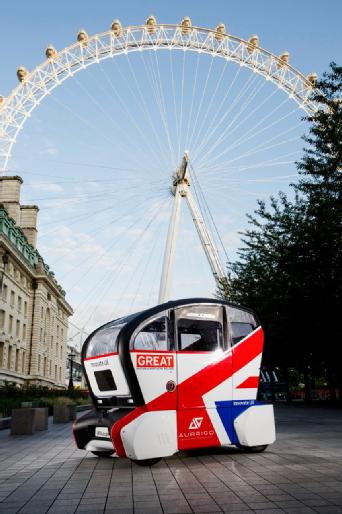 that:
that:
“An increased use in LSAD systems can lead to a shift in the way people, goods and services are transported. This new standard will enable the safe deployment of an environmentally-friendly transport option, as well as a solution for people with mobility issues."
Some of the key points from the new standard include:
· Providing minimum operating capabilities for LSAD systems including guidance on Operational Design Domain (ODD) definition· Guidance on how LSAD systems may fit into the wider transport ecosystem
· Performance requirements for different aspects of the LSAD system such Dynamic Driving Task; Emergency maneuvers (e.g. emergency stop and minimal risk maneuvers); hazardous situation identification; static and dynamic obstacle detection and avoidance
· Test procedures for various system functionalities
Simon Brewerton, Chief Technology Officer at Aurrigo Driverless Technology, a Coventry based LSAD system manufacturer comments:
“Aurrigo is one of only a couple of UK based vehicle OEMs who produce low speed autonomous vehicles. These vehicles are engineered in the UK but are deployed globally. It had been increasing difficult to communicate the level of safety engineering that our vehicles encompass, and also difficult to compare various attributes and functionality against the perceived state of the art for this class of vehicle.
“Aurrigo decided to invest our resources and domain knowledge following an invitation from WMG to bring an OEM viewpoint to the BSI working group for the ISO22737 LSAD standard. Working closely with Siddartha, Aurrigo had the opportunity to share the experiences gained from many deployments globally, and provide insight into the practicalities of building a suitable test regime.
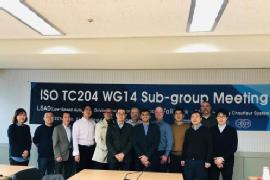 “The new LSAD standard puts a line in the sand for all OEMs to exceed and so enables a global market where all players rise to the same exacting standards as each other, keeping the public safe and the industry competitive.”
“The new LSAD standard puts a line in the sand for all OEMs to exceed and so enables a global market where all players rise to the same exacting standards as each other, keeping the public safe and the industry competitive.”
Nick Fleming, Head of Sector, Transport and Mobility, British Standards Institution mentioned:“BSI, the UK’s National Standards Body, would like to recognise the work of our technical committee (EPL/278) and UK experts that have fed into the development of this important standard, the first international (ISO) standard for Low-Speed Autonomous Driving (LSAD) systems. BS ISO 22737 is an important development in the evolving landscape for automated vehicle standards, much like BSI’s PAS 1883 an ODD (Operational Design Domain) taxonomy for Automated Driving Systems authored by Siddartha and published in 2020, in helping support safe trialing and operation of automated vehicles.”
UKRI Future Leaders Fellowships Director Stephen Meader said:
“The publication of the first International safety standard for fully autonomous vehicles represents a major step towards the widespread adoption of a more environmentally friendly mode of transport that can cut both congestion and carbon emissions. In the year of COP26, this kind of innovation has never been more important.
“The work of Dr Khastgir and his team demonstrates the value of Future Leaders Fellowships funding to support talented researchers and innovators to deliver change that can be felt across society and the economy.”
ISO 22737 was developed by ISO technical committee ISO/TC 204 Intelligent transport systems, whose secretariat is held by ANSI, the ISO member for the USA.
It can be purchased from your national ISO member or through the ISO Store.
ENDS
8 JULY 2021
NOTES TO EDITORS
Dr Siddartha Khastgir is the recipient £1.2 million UKRI Future Leader Fellow which focusses on evaluating the safety of Autonomous Vehicles by scenario generation and use of simulation-based testing. See more: https://warwick.ac.uk/fac/sci/wmg/research/cav/vandv/ukriflf/
High-res images available at:
https://warwick.ac.uk/services/communications/medialibrary/images/july_2021/img_0022_-2.jpeg
Caption: Some members of the drafting team of ISO 22737. Experts from Japan, USA, South Korea, Canada, Australia and the UK
Credit: WMG, University of Warwick
https://warwick.ac.uk/services/communications/medialibrary/images/january2020/xt2a0019.jpg
Caption: Aurrigo Autonomous pods outside the Professor Lord Bhattacharyya building, University of Warwick
Credit: WMG, University of Warwick
https://warwick.ac.uk/services/communications/medialibrary/images/july_2021/1.jpg
Caption: Aurrigo Autonomous pod on a pedestrian street
Credit: Aurrigo Driverless Technology
https://warwick.ac.uk/services/communications/medialibrary/images/july_2021/2.jpg
Caption: Aurrigo Autonomous pod on a pedestrian street
Credit: WMG, University of Warwick
https://warwick.ac.uk/services/communications/medialibrary/images/july_2021/7.jpg
Caption: Aurrigo Autonomous pod on a pedestrian street
Credit: Aurrigo Driverless Technology
https://warwick.ac.uk/services/communications/medialibrary/images/july_2021/3.jpg
Caption: Aurrigo Autonomous pod
Credit: Aurrigo Driverless Technology
ISO 22737: https://www.iso.org/standard/73767.html
For further information please contact:
Alice Scott
Media Relations Manager – Science
University of Warwick
Tel: +44 (0) 7920 531 221
E-mail: alice.j.scott@warwick.ac.uk
Additive layer manufacturing supply chains to be protected from cyber-attacks in light of COVID-19
· Additive manufacturing was upped during the COVID-19 pandemic to make ventilators, however when production was up so were the number of cyber-attacks
· In order to continue production without disruption new technologies are needed, which researchers from WMG, University of Warwick aim to deliver thanks to a grant from EPSRC
· Working with partners the new technologies developed will secure the supply chain in case of another global threat
The COVID-19 pandemic highlighted just how vulnerable UK manufacturing supply chains are, as there was an increase in the volume of cyber- enabled attacks on cyber-physical systems. There is therefore an urgent need to develop technologies and methods to support disruption-resilient manufacturing.
enabled attacks on cyber-physical systems. There is therefore an urgent need to develop technologies and methods to support disruption-resilient manufacturing.
This has been made possible, thanks to over £1 million of funding from the EPSRC, which will enable Dr Greg Gibbons, Prof Carsten Maple and Dr Greg Epiphaniou from WMG, and other colleagues from Henley Business School and Surrey Business School, to research into disruption-resilient-manufacturing.
Their project, entitled, ‘Responsive Additive Manufacturing to Overcome Natural and Attack-based disruption (RAMONA)’, will address the need and opportunity for the UK to become global leaders in responsive manufacturing, taking advantage of the opportunities presented by UK strengths in Additive Manufacturing.
The importance and limitations of responsive manufacturing systems – those that are able to respond to minimise the impact of a disruption – in the UK have been brought to the fore by COVID-19. Traditional supply chain weaknesses have been exposed, creating a ‘watershed’ moment for additive manufacturing, which could be used to complement existing manufacturing supply chains and embed resilience within them.
This was evidenced by the Ventilator Challenge UK, where additive manufacturing was a key technology in supporting the production of thousands of ventilators for the NHS within 12 weeks.
Additive Manufacturing has particular strengths in supporting distributed manufacturing, on-demand production, and rapid development and approval of component design. However, this type of responsive manufacturing capability is uncommon and requires further development before it can be embedded as an industry wide capability.
This will be achieved by addressing the following challenges:
- How to develop effective techniques to detect disruption
- How to effectively and accurately analyse the disruption; and
- How to respond to disruption through reconfigured manufacture.
 Dr Greg Gibbons, Reader in Additive Manufacturing in WMG at Warwick, comments:
Dr Greg Gibbons, Reader in Additive Manufacturing in WMG at Warwick, comments:
“This award is an exciting opportunity to engage in this timely and highly impactful research. It will enable us to develop the technologies required by UK manufacturing to ensure robust and reliable supply chains that can respond rapidly and optimally to disruptive threats, making a real difference to the security of supply when faced with global threats such as we have seen during the COVID Pandemic.
“It is fantastic to be able to collaborate with scholars, as well as leading organisations across a range of industries including automotive, defence, security and healthcare in developing solutions to the key challenges facing manufacturing today.”
Dr Gibbons will be working alongside colleagues from WMG, Henley Business School, University of Reading, and Surrey Business School at the University of Surrey. They will also be working with multiple project partners from industry, including Royal Berkshire NHS Foundation Trust and Thales Ltd.
The research will begin later in the year (September 2021) and is due to finish in early 2024. It received a total grant of £1,024,124. Find out more details of the grant.
ENDS
7 JULY 2021
NOTES TO EDITORS
High-res images available at:
https://warwick.ac.uk/services/communications/medialibrary/images/march2014/dr_greg_gibbons.jpg
Caption: Dr Greg Gibbons, from WMG, University of Warwick
Credit: WMG, University of Warwick
For further information please contact:
Alice Scott
Media Relations Manager – Science
University of Warwick
Tel: +44 (0) 7920 531 221
E-mail: alice.j.scott@warwick.ac.uk
Norton Motorcycles supports student electric motorcycle research with WMG, University of Warwick
§ Norton Motorcycles engineers have supported students at WMG, University of Warwick to develop a TT capable electric racing motorcycle, named ‘Frontier’
§ This includes donating a high performance bike frame and data to students undertaking research into study of electric motorcycles at WMG, University of Warwick
§ Students adapted the sports bike platform to run a specially developed electric powertrain rated with a power output of 160kW/201bhp and 400Nm torque
§ Immersion-cooled 16kWh battery pack is the first of its kind for application on a motorcycle, with battery cases manufactured using advanced laser-welding technology to deliver structural integrity and maximise reliability and repeatability.
The Norton Motorcycle Co Ltd is proud to support students at the University of Warwick who are researching the future of electric racing motorcycles. The group of students undertaking the project are aided by the donation of a sports bike frame by Norton Motorcycles, which has been adapted by the student team to be fitted with an electric powertrain, with batteries and control systems designed in-house.
The group of 13 students at WMG, University of Warwick – made up of cross-functional team from first- to final-year degree students, with the support of some EngD students – are joined by a selection of leading academics, engineers and researchers representing WMG, at the University. On-campus research has been reinforced with input, support, mentoring and technical guidance from Norton’s own designers and engineers, further to the supply of the frame.
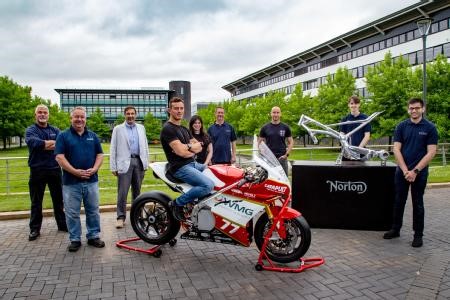 The research team supported by WMG Centre High Value Manufacturing Catapult have developed an electric motorcycle powertrain, using a high performance sports model as a platform. The electric powertrain designed to work in the Norton frame is rated with a power output of 160kW or 201bhp, and delivering 400Nm of torque from a standing start. The acceleration and speed characteristics of the electric bike in motion roughly translate into a combustion-engine equivalent of around 900cc to 1,000cc – only slightly less than Norton’s own petrol powertrain, they have called the bike Frontier.
The research team supported by WMG Centre High Value Manufacturing Catapult have developed an electric motorcycle powertrain, using a high performance sports model as a platform. The electric powertrain designed to work in the Norton frame is rated with a power output of 160kW or 201bhp, and delivering 400Nm of torque from a standing start. The acceleration and speed characteristics of the electric bike in motion roughly translate into a combustion-engine equivalent of around 900cc to 1,000cc – only slightly less than Norton’s own petrol powertrain, they have called the bike Frontier.
The electric motor draws power from an immersion-cooled battery pack that has been designed and tested by the students and is the first of its kind for application in an electric motorcycle. The battery with a capacity of 16 kWh is designed to last longer with the application of robust thermal management strategies, while also allowing for larger short term power peaks required by a racing motorbike.
In addition, the cooling system will enable the team to operate at a more efficient temperature range by optimising the starting temperature of the dielectric fluid prior to a race or testing, based on the requirements of the track.
The battery can be recharged with the common CHAdeMO connector, facilitating fast charging where available and allowing for a full charge of the battery in around an hour (up to 80% from empty in just 32 minutes). These impressive figures have supported the testing and development of the electric bike prototype, with research teams able to maximise riding time on the track thanks to reduced charging times, allowing for further track-side development and optimisation with the help of a fully instrumented bike.
The battery case was manufactured using laser welding techniques developed at WMG, The University of Warwick, a manufacturing process that is easily repeatable for potential serial production, while also incorporating process-control to maximise reliability and strength of the joints.
Students have been able to craft a functioning electric motorcycle based on the Norton frame in just seven months. The project began in October 2020 with the donation of the frame and associated parts, with students working hard to realise their goal alongside studying for their degrees. The bike has undergone significant testing including much computer-based validation such as CFD of battery cooling, modelling around thermal management, along with physical testing of cells and modules – whilst constantly reviewing engineering decisions to minimise and mitigate the risk of failure.
Aman Surana, Chief Engineer of the Warwick Moto team, said:
“Ever since we started the Warwick Moto project, the overall goal has always been around learning and enhancing our engineering experience. We have gained practical experience in our research that is required to deliver a real-world project, along with balancing considerations such as tight budgets and deadlines, while learning logistics and everything around delivering an industry project. This has made us all the more proud with the way the Frontier looks.
“To have access to Norton’s engineering team, years of experience and data has been a great resource, integral to the design of the bike. Combining the motorcycling knowledge from Norton, with the leading research at WMG, University of Warwick has been a fantastic learning opportunity for all students involved. We’re very excited to see what this collaboration leads to.”
Dr Robert Hentschel, CEO of Norton Motorcycles, said:
“We are thrilled to be able to support the engineers of the future, who are developing tomorrow’s technology today on the basis of a Norton frame. Our support by means of donation of the frame is just the beginning. Norton’s team of designers and engineers have been very interested to observe how this project is taking shape, supporting the student team wherever possible with advice and guidance.
Follow the Warwick Moto team’s journey:
Instagram: https://www.instagram.com/warwick.moto/
Facebook: https://www.facebook.com/warwickmotoracing/
LinkedIn: https://www.linkedin.com/company/warwick-moto/
ENDS
30 JUNE 2021
NOTES TO EDITORS
High-res image available at:
https://warwick.ac.uk/services/communications/medialibrary/images/junes_2021/wmg---norton_pr_002.jpg
Caption: The finished electric racing bike ‘Frontier’ next to a model of the Norton Motorcycles frame it is built on. The full team from left to right are: Robert Driver – Battery Testing & Characterisation Engineer, David Cooper – Precision Engineer at WMG, Professor Dave Greenwood - CEO of WMG High Value Manufacturing Catapult, Tom Weeden – the professional rider for the team, Lee-Rose Jordan – Project Manager, Student Projects at WMG, Malcolm Swain – Lead Engineer a WMG, Martin Neczaj – Chief Chassis Engineer at Norton Motorcycles, James Grohmann –Lead Design Engineer (Student), Aman Surana – Chief Engineer of Warwick Moto team (Student)
Credit: Norton Motorcycles
About Norton Motorcycles
Norton Motorcycles was founded in 1898 as a manufacturer of fittings and parts to the two-wheel trade.
Norton Motorcycles went on to become one of the most iconic British motorcycle brands, manufacturing famous models such as the 650SS, Atlas, Commando, Dominator, Manx, Navigator and more – constantly innovating in motorcycle technology, with features advantageous for lightness and strength in motorcycle racing. Norton Motorcycles has an unrivalled history in motorsport and the brand name is synonymous with Isle of Man TT racing.
In April 2020, Norton Motorcycles was acquired by TVS Motor Company, India’s third-largest motorcycle manufacturer. Under the leadership of TVS, Norton is based out of a new manufacturing facility in Solihull, West Midlands, building British bikes in England using traditional hand-crafted techniques with modern day machinery for consistently high quality.
About Warwick Moto
Warwick Moto is a student led project, with the ultimate aim of creating an electric motorbike to race at the Isle of Man TT. Despite the temporary moratorium of the TT Zero, the team’s ambitions to develop a leading electric motorcycle remain. Originally based on the Honda Fireblade platform, the team switched to a Norton platform in October 2020 for their first electric motorcycle.
The group of 13 students at the University of Warwick, is made up of a cross-functional team from first- to final-year degree students, with the support of some EngD students from different disciplines across the University. They are joined by a selection of leading academics, engineers and researchers representing WMG, University of Warwick.
2016 Senior Manx GP winner, Tom Weeden is the development rider for the team with experience both on track and road racing events. Tom has been an integral part throughout the development process.
The project is possible thanks to sponsors: WMG University of Warwick, WMG centre High Value Manufacturing Catapult, Norton Motorcycles, DYMAG Performance Wheels, Michelin Tyre PLC, MIVOLT Immersion Cooling by M&I Materials, PWR Advanced Cooling Technology, laserlines Ltd., Xometry Europe, RS Components, Embed Limited, HEL Performance, Renthal, R&G Racing, Rock West Composites, Pro-Bolt & Wraptastic.
For further information please contact:
NORTON MOTORCYCLES:
Andrew Roberts
E-mail: andrew@influenceassociates.com
Tel: +44 (0) 7432 718 801
UNIVERSITY OF WARWICK
Alice Scott
Media Relations Manager – Science
University of Warwick
Tel: +44 (0) 7920 531 221
E-mail: alice.j.scott@warwick.ac.uk
Made Smarter launches £1.9 million digital scheme with WMG to help West Midlands SMEs
 Made Smarter has launched a £1.9 million digital adoption push to drive growth in West Midlands manufacturing and engineering SMEs and help them boost productivity.
Made Smarter has launched a £1.9 million digital adoption push to drive growth in West Midlands manufacturing and engineering SMEs and help them boost productivity.
Digital experts will provide advice to businesses on how to switch to advanced and automated technologies as well as working to improve employees’ overall digital skills.
The Coventry and Warwickshire Local Enterprise Partnership (CWLEP) Growth Hub is leading the one-year Made Smarter scheme with its fellow Growth Hubs in Greater Birmingham and Solihull, the Black Country, Worcestershire Business Central, The Marches, and Stoke-on-Trent and Staffordshire on behalf of the West Midlands Combined Authority and the Department for Business, Energy and Industrial Strategy.
The West Midlands Growth Hubs are working closely with the West Midlands Combined Authority and their strategic partners WMG, at the University of Warwick and the Manufacturing Technology Centre (MTC) in Coventry to tap into the expertise of their digital manufacturing specialists.
Professor David Greenwood, CEO of WMG HVM Catapult centre, comments:
“Digitalisation for smaller companies needs a different approach than for larger companies. It isn’t about purchasing multi-million pound software systems – it’s about improvements in design tools, manufacturing, digitalising legacy plant and equipment and integration to supply chain systems.
“We are delighted to bring the expertise of WMG and the High Value Manufacturing Catapult to help transform the productivity of SMEs who are so critical to the West Midlands regional economy.”
Craig Humphrey, managing director of the CWLEP Growth Hub, said there are potentially 14,500 SME manufacturers in the region who could benefit from the National Made Smarter Movement. He said:
“All the Growth Hubs in the West Midlands are working together to contact SMEs in our areas who will benefit from this practical help.
“Digital technology can appear daunting and with the day-to-day efforts of owners and senior management teams to keep their businesses going during the pandemic, this kind of activity needs to be pushed to the upper end of their priorities.
“But we believe it is key to help SMEs in the advanced manufacturing and engineering sector to run more efficiently for their long-term future success.
“The Growth Hubs will be assessing each business that applies to make sure we provide them with the kind of specialist support they need, which in Coventry and Warwickshire could be in the fields of robotics and automation, and artificial intelligence since we are working with WMG and the MTC.
“We will then help SMEs to develop an action plan for adopting digital technology in their own detailed roadmap, which could involve participating in a leadership training programme, being offered a student placement, or receiving a match funded grant.
“The National Made Smarter Movement aims to entice SMEs that are not often reached through the usual business programmes and services, by transforming the digital tools within their companies, which in addition to upskilling their staff and creating jobs, will benefit the regional economy.”
Charlotte Horobin, Make UK Region Director – Midlands & East of England, said:
“The roll out of the Made Smarter Adoption programme across the West Midlands is great news for manufacturers, which we and our members welcome.
“Our 2020 Innovation Monitor highlighted that 18% of manufacturers in the West Midlands were not adopting industrial digital technologies, which we hope the programme will help address. Digital take-up will be key to boosting productivity as we come out of the current COVID crisis, creating more highly paid jobs and underpinning the region’s competitiveness.”
Neill Smith, Head of Manufacturing Support Services at the Manufacturing Technology Centre, said that the Made Smarter scheme perfectly complements its ongoing work to support manufacturing SMEs increase productivity, develop resilience, increase competitiveness and, ultimately, grow their business.
He said: “We help introduce digital systems to SMEs, that capture the right information at the right time, to enable them to make the right decisions and manage their companies more efficiently.
“From supporting the adoption of process control automation, robotics, and digitalisation tools, to helping SMEs with data or system integration and the adoption of augmented and virtual reality tools, we’re supporting companies to use digital data to drive digitally controlled equipment in the latest methods of manufacture.”
To register and find out more information, please visit http://bit.ly/MadeSmarterWestMidlands
ENDS
22 JUNE 2021
NOTES TO EDITORS
To find out more about MadeSmarter visit http://bit.ly/MadeSmarterWestMidlands
Made Smarter is a national movement to drive growth amongst UK makers and advance the UK economy. Backed by world renowned businesses and the UK government, it will improve the development and adoption of emerging technologies. Making a real, everyday difference to people from the boardroom to the factory floor.
Made Smarter was formed following a nationwide review into UK manufacturing that recommended three key changes: More ambitious leadership. More innovation in developing new technologies. And faster implementation and adoption of those technologies. We’ll be boosting the digital skills of industry leaders, bringing businesses and research development together to develop new technology, and helping makers embrace new digital tools. In doing so, we’ll inspire the next industrial revolution and make the UK a leader in digital technologies.
For further information please contact:
Alice Scott
Media Relations Manager - Science
University of Warwick
Tel: +44 (0) 7920 531 221
E-mail: alice.j.scott@warwick.ac.uk
Apprenticeships Minister opens £10 million WMG Degree Apprenticeship Centre, at the University of Warwick
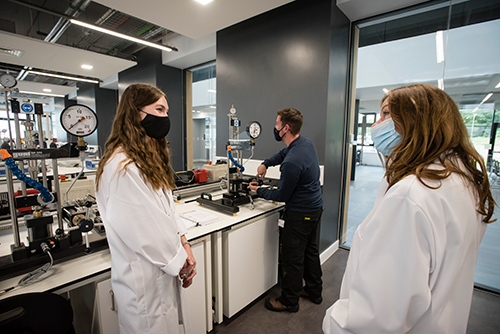
On Thursday 17th June 2021 Gillian Keegan MP, the Minister for Apprenticeships and Skills, formally opened the WMG Degree Apprenticeship Centre, at the University of Warwick.
The WMG Degree Apprenticeship Centre was awarded £10 million funding from the Government’s Local Growth Fund through the Coventry and Warwickshire Local Enterprise Partnership (CWLEP).
The new Centre provides apprentices with the opportunity to study on degree programmes to develop the skills needed by advanced engineering and manufacturing companies.
The Centre offers degree apprenticeship training programmes for up to 1,000 students at a time.
WMG and the rest of the University of Warwick already provides 20 Degree Apprenticeship programmes across five academic departments for 791 students, one of the largest groups of degree apprenticeship courses at a Russell Group university.
Minister for Apprenticeships and Skills Gillian Keegan said:
“It was such a privilege to open the WMG Degree Apprenticeship Centre at Warwick University. Apprenticeships are a brilliant way for people of any age to launch new careers or progress in their industry, with opportunities at a range of levels across a variety of exciting sectors.
“As a former apprentice myself I know first-hand the lifelong passion for learning an apprenticeship can instil. It was wonderful to speak to Beverley and Rishi and hear their passion for where their apprenticeship journey will take them. I look forward to seeing how the centre will support the leaders of tomorrow to get the skills they need to succeed.”
The degree apprenticeship students will complete their studies at the University campus in conjunction with their employment at companies throughout Coventry and Warwickshire and the West Midlands.
Rishi Chohan, Degree Apprentice from the Manufacturing Technology Centre, said “It was a great pleasure to show Gillian Keegan MP around WMG’s fantastic Degree Apprenticeship Centre. As a final year degree apprentice, on the Applied Engineering Programme, the skills I have learnt at WMG, University of Warwick, have helped consolidate and facilitate my development as an engineer progressing into leadership at the Manufacturing Technology Centre.
Beverley Ngo, Degree Apprentice from Jaguar Land Rover, adds: “It was a pleasure to attend the official opening of the WMG Degree Apprenticeship Centre. I am a second year degree apprentice at Jaguar Land Rover and part of the first cohort of Digital Apprentices on the “Digital Technology Solutions” course. It was an honour to meet and show Gillian Keegan MP around the fantastic building that I will be learning and developing knowledge in such an important area of technology.”
The innovative new Degree Apprenticeship Centre has a unique learning environment with open spaces for collaborative and individual work, technology-enabled seminar rooms and a purpose-built, multifunctional, laboratory for activity based teaching and learning using state of the art equipment. The WMG Degree Apprenticeship Centre is the first stage of a future Degree Apprenticeship complex at the campus to train students in a range of Degree Apprenticeships.
At the official opening WMG Executive Chair Margot James said:
“We are delighted to welcome Gillian here today to officially open the WMG Degree Apprenticeship Centre, and recognise the importance of our vital work with industry. Our Apprenticeship Centre provides the opportunity for apprentices to study whilst working in their companies, upskilling our workforce and bringing tangible benefits to advanced engineering and the manufacturing sector, to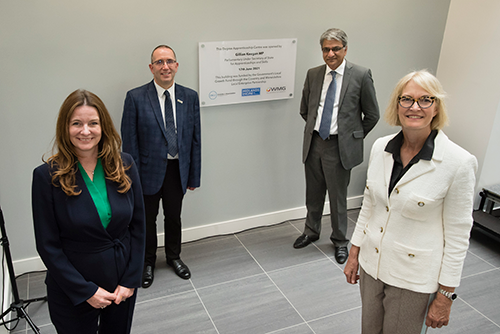 ensure the UK remains competitive”
ensure the UK remains competitive”
The University of Warwick’s Vice Chancellor Professor Stuart Croft:
“Warwick’s degree apprenticeships are founded on passion, knowledge, and a commitment to innovation. We demonstrate this in the way we work with industry and other partners and our degree apprenticeship students.”
“We encourage gifted apprentices from all backgrounds to share our passion who want to have the opportunity to earn as they learn and pursue exciting careers in their chosen field from day one of their time on these programmes.”
“Employers also value the passion and innovation of these students who will help close the skills gaps and inspire positive change both inside and outside the workplace.”
“As a university we are deeply committed to continue to expand our routes to degree qualifications.”
Marion Plant, Board Director and Chair of the CWLEP’s Productivity and Skills Business Group, said:
“This is a significant project funded by the CWLEP and fits in perfectly with our Strategic Reset Framework to provide high quality jobs and levelling up opportunities by supporting the development of higher-level skills.
“It is vital for the long-term ambitions of Coventry and Warwickshire’s economy that we retain talented people in the area by ensuring employers have the skills their future workforces will need to drive forward the innovations for which we are renowned in automotive and advanced manufacturing, to be globally competitive in an increasingly digitised world.”
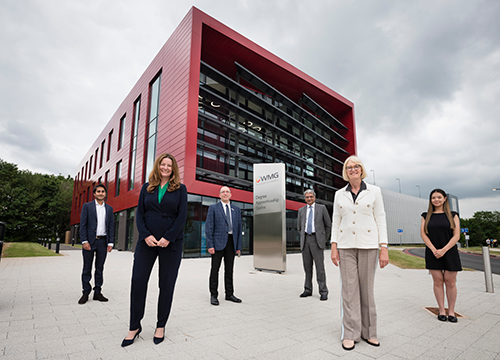
Work-based learning has always been a key part of WMG’s philosophy they are passionate about offering apprentices an integrated experience and supporting companies with their workforce strategies – be it recruiting the next generation of talent or upskilling or reskilling existing employees to support career paths and changes in business need.
Businesses today are rapidly changing and the skills they require to develop and grow are changing equally as quickly. People are already doing jobs that did not exist 10 years ago and the events of 2020 have precipitated even greater change. Working collaboratively at a broader level with industry, other training providers and specialist bodies, WMG is continuing their pioneering approach to develop programmes and identify priority areas that will help fill the existing and emerging skills gaps as they arise.
Student Communication award for WMG Senior Teaching Fellow
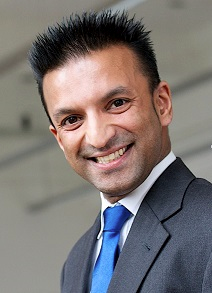 WMG Senior Teaching Fellow, Rink Desai has been awarded a prestigious Transforming Education Award, from the University of Warwick’s Student Union, for Student Communication.
WMG Senior Teaching Fellow, Rink Desai has been awarded a prestigious Transforming Education Award, from the University of Warwick’s Student Union, for Student Communication.
The Student Communication award is for any individual staff member who has gone above and beyond in using meaningful ways to ensure that everyone has access to relevant and timely information.
This may specifically encompass communicating developments with regards to changes in light of Covid-19 restrictions, but also in general. The awarding panel noted that: “Rink has done an excellent job communicating with his (apprentice) students and kept them updated with early release of learning resources and timetables which helped them to plan their employment and degree commitments at a turbulent time. This was a result of Rink acting on the ‘voice of the student’ which was very much appreciated by his cohorts.”
Rink said: “I am very honoured to have been recognised by the degree apprenticeship students. We have had a challenging year where students and staff have dealt with difficult circumstances, and also a time in which communication has been key to ensuring a rewarding learning experience. My sincere thanks go to the students who have contributed to such a positive learning environment.”
Rink teaches Process Optimisation on the BEng Applied Professional Engineering programme. Find out more about the programme here: BEng Applied Professional Engineering Programme : University of Warwick
WMG’s Professor Margaret Low awarded MBE
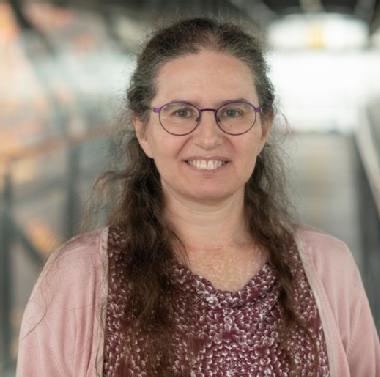 Many congratulations to WMG’s Professor Margaret Low as she receives an MBE for her services to public engagement and widening participation.
Many congratulations to WMG’s Professor Margaret Low as she receives an MBE for her services to public engagement and widening participation.
Margaret joined WMG back in 1988, and for many years she has made it her mission to inspire young people from all backgrounds in STEM subjects and into higher education.
She has dedicated her time to develop innovative outreach activities for young people - connecting the local community with academia and promoting STEM in an engaging way.
Professor Margaret Low said: “It’s lovely, if a little overwhelming and totally unexpected, to be recognised in this way. Everything I’ve achieved has been in collaboration with fantastic colleagues and friends at WMG and across the University. None of this would have been possible without their hard work and dedication.
“I’ve also had the good fortune to work with some brilliant students through Warwick Volunteers who’ve been instrumental in bringing outreach activities into schools.”
About Professor Low
Working with Warwick Volunteers, she collaborates with University of Warwick students to run Scratch workshops in local primary and secondary schools reaching more than 250 children each year through the Technology Volunteers project.
During the Covid-19 pandemic, Margaret and her team also developed invaluable resources to help support home-schooling.
In 2016 Margaret was awarded an HEA National Teaching Fellowship. The Fellowships recognise and celebrate the absolute highest standards of learning and teaching across higher education.
More than a decade ago she pioneered the use of Scratch in the UK, a user-friendly programming tool, for outreach work in schools.
The Prof. Lord Bhattacharyya building crowned best workplace in the UK
 The Prof. Lord Bhattacharyya building, home to the National Automotive Innovation Centre, at the University of Warwick, has been crowned the best workplace in the UK, in the Innovation category, at the prestigious British Council for Offices (BCO) awards.
The Prof. Lord Bhattacharyya building, home to the National Automotive Innovation Centre, at the University of Warwick, has been crowned the best workplace in the UK, in the Innovation category, at the prestigious British Council for Offices (BCO) awards.
The BCO Awards, recognises the highest quality developments in the UK and sets the standard for excellence in both the regional and national office sector.
As a Midlands and Central England regional award winner, the building was then crowned the national Innovation Award winner, at a virtual ceremony last night (Thursday 10th June).
Named in honour of Britain’s first ever Professor of Manufacturing, the Prof. Lord Bhattacharyya Building houses the National Automotive Innovation Centre; a multimillion-pound centre, founded by WMG, Jaguar Land Rover and Tata Motors which is well timed, arriving when a global mobility revolution is underway, and aiming to be a stimulus to the rebirth of an optimistic new age of manufacturing in the Midlands to develop future vehicles and mobility solutions.
Fronted by a dramatic elevation, the 33,000m2 building has been sensitively designed for engineers, designers and academics to work together in, with a variety of spaces allowing for both privacy and collaboration. A timber roof spans the structure of the building, demonstrating the sustainable credentials of a facility that cannot but inspire.
Executive Chair of WMG, Margot James comments: “I’m thrilled that the Prof. Lord Bhattacharyya Building has been recognised in this way, it is a great tribute to the late Professor Lord Bhattacharyya’s vision. Having a building that inspires designers, engineers and academics to develop the next generation of transport is excellent news for our partners and the region. The Midlands is the beating heart of automotive in the UK, and the National Automotive Innovation Centre, will be the driving force behind future innovation in transport mobility.”
James Breckon, Director of Estates, at the University of Warwick, comments: “It is great to see this new building being recognised by other professionals and is testament to the wealth of architectural and engineering talent that was brought together to deliver this exemplary sustainable building. It brilliantly draws Industry and Academia together providing an inspirational environment to innovative within. As a landmark building it has transformed the campus at the University of Warwick and is a fitting legacy to the late Prof Lord Bhattacharyya.”
Carol Costello, Practice Leader at Cullinan Studio who led on the interior and workplace design added: “It’s been our pleasure to engage with all the organisations using the NAIC. We had deep discussions about how to create an environment that would foster innovation, creativity and collaboration. The finished building is the result of many passionate conversations to create a truly inspiring place.”
